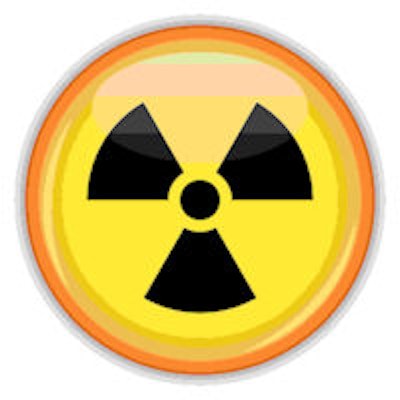
Actual patient radiation dose data extracted from RIS/PACS databases are far more reliable than commonly used self-reported patient dose surveys that are based on average-sized patients and typical scanner parameters, researchers from Western Australia have found.
In a study published in the February issue of the European Journal of Radiology (EJR), a team led by Rachael Moorin, PhD, an associate professor in the department of imaging and applied physics at Perth's Curtin University, reported that radiation dose data calculated using self-reported surveys differed both systemically and proportionally from that calculated using data stored in RIS/PACS.
"The bias observed in our study indicates that care should be taken when interpreting the results of studies measuring radiation dose using self-complete surveys," noted Moorin, who is also an adjunct professor in the School of Population Health at the University of Western Australia. "The availability of electronic databases that include information required for the evaluation and monitoring of CT radiation dose provides the opportunity to capture better quality data in a cost-effective manner."
While concerns over CT radiation dose have led to support for creating diagnostic reference levels (DRLs) for these studies, estimates of dose and cancer risk from CT scans to underpin the creation of DRLs have been undertaken using self-report surveys combined with "typical" CT protocol/machine settings, according to the authors.
"However, this data capture technique has inherent limitations typical of all self-complete surveys such as response bias, low response fraction, poor generalizability (due to the data captured not being a representative sample either purposefully or otherwise) and, if the instrument has not been appropriately validated, poor validity and reliability," they wrote.
Because radiation dose information is also contained in departmental RIS/PACS, the researchers sought to compare dosimetry derived from RIS/PACS with those gathered from surveys (EJR, Vol. 83:2, pp. 329-337).
Using both surveys as well as RIS/PACS data, the team collected technical data from a large metropolitan hospital in Western Australia for diagnostic CT scanning examinations performed on adults in six different clinical scenarios:
- Routine head for trauma or stroke
- Chest for lung cancer (known or suspected metastases)
- Chest for pulmonary embolism
- High-resolution chest for chronic obstructive pulmonary disease
- Abdomen/pelvis (abscess)
- Chest/abdomen/pelvis for lymphoma staging or follow-up
"Usual practice"
The surveys, which were completed by the institution's chief CT radiographer in 2011, sought to garner technical data related to examinations performed on average-sized patients in order to represent "usual practice," according to the researchers.
In addition to seeking technical information such as kilovoltage (kV), mA, tube rotation times, collimation widths, pitch, scanning method, and typical anatomical reference start-stop positions of the scan, the questionnaire also asked respondents to report the average volume-weighted CT dose index (CTDIvol) and dose-length product (DLP) for each scenario based on up to 10 standard adult patients receiving each exam.
The researchers then collected the same data from their RIS/PACS for a random sample of 20 adult cases (or all available cases if there were fewer than 20) performed between 1 January and 30 April 2011.
Dosimetry was reported for both sets of data using CTDIvol, DLP values, and calculation of organ and effective dose for each sequence based on the provided scan settings. After radiation dose was calculated using each of the datasets, the researchers then evaluated the results for inter-reader agreement.
With the exception of head and abdomen/pelvis studies, all scenarios had a median number of sequences greater than one, according to the PACS data. The self-reported survey only reported a single sequence.
Lower CTDIvol
Furthermore, the average CTDIvol found using the PACS data was substantially lower than the self-reported surveys in three scenarios.
"The greatest difference occurred in 'chest' for chronic obstructive pulmonary disease with a CTDIvol reported nearly three times larger than the PACS mean CTDIvol," the authors wrote. "The DLP was consistently lower using the average of the PACS data compared with self-report."
Looking at whole-body effective doses, the PACS data showed substantially lower doses (< 2 mSv) in the chest for pulmonary embolism, chronic obstructive pulmonary disorder, and abdomen/pelvis scenarios, and substantially higher (> 2 mSv) effective doses in the chest for lung cancer and chest/abdomen/pelvis scenarios.
As for individual organ doses, the PACS data revealed higher doses in organs near the limits of the scanning field.
"The disparity was greater and more variable for organ dose than effective dose due to reliance of survey data on 'generic' anatomical start and stop limits compared with actual data available on RIS/PACS," the authors wrote.
Overall, the study showed that self-reported surveys contain both proportional and systemic bias, according to the authors. Importantly, the differences varied across CT examination types, and therefore were not amenable to a simple fix.
"We recommend national and local databases that are established to routinely capture aggregated and anonymous CT dose data for the development and monitoring of DRLs and surveillance of population radiation dose," they wrote.



















